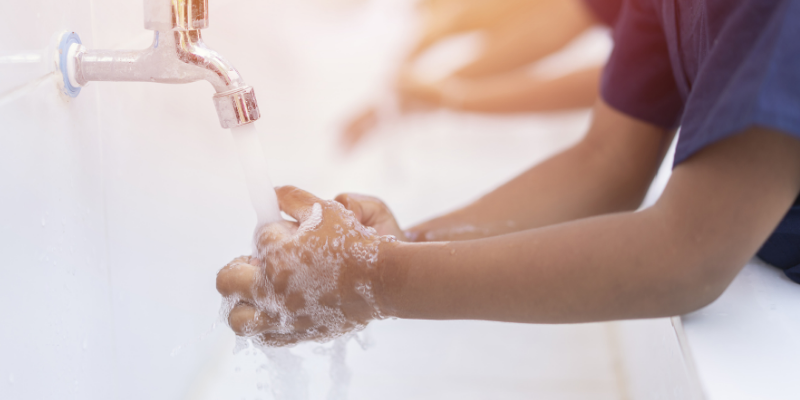
How many times a day do you wash your hands? We hope the answer is a lot! But when was the last time you stopped to think about how effective your hand washing is? Keeping your hands clean is vital to staying healthy, so we want to take you back to the basics and walk you through how to wash your hands!
Why Handwashing is Important
Before we jump into a handwashing how-to, let’s talk about why it’s a vital part of staying healthy. We use our hands all throughout the day and pick up germs with everything we touch. Not all germs are bad, but many can be very harmful as they carry bacteria, viruses and more that cause us to get sick. You can learn all about the different types of germs from the Mayo Clinic here.
Once you pick up germs, you can spread them to any person or object you touch. Many germs are also passed from person to person from bodily fluid, sneezing and coughing. This is why the CDC has recommended that individuals avoid touching their faces throughout the COVID-19 outbreak. You can spread COVID by coughing or sneezing into your hands and then touching something, or someone can spread the virus to you by doing the same thing.
Here is a list of the most common ways individuals spread germs:
- Changing dirty diapers
- Touching toilet seats and handles
- Handling raw meat while cooking
- Touching objects and fixtures in public places
Washing your hands thoroughly after activities where you may have picked up harmful germs is essential to avoid contracting and spreading infections and viruses. So, let’s talk about the proper way to get rid of these nasty germs.
How to Properly Wash Your Hands
These are the following steps the CDC recommends for washing your hands to eliminate germs.
- Wet your hands with running water. Water sitting in a sink or basin may contain germs from the last person who used the water, so it’s always best to get your hands wet with fresh water from the sink. The CDC even points out that there is no evidence that warm or cold water is better at killing germs. So, they recommend using cold water as it’s more cost-effective and environmentally friendly.
- Turn off the faucet. Studies show that very little contamination happens from people touching a faucet, so turning off the water to prepare for lathering your hands in soap is another way to save money and be more environmentally friendly.
- Rub your hands together with soap. This is recommended because soap and friction work hand-in-hand (pun intended) to lift dirt, oil and microbes from the skin. Rub your hands for at least 20 seconds to ensure you are lifting all the germs on your skin. This is about the length of singing the “Happy Birthday” song to yourself twice!
- Thoroughly rinse your hands under running water. Running water is recommended again for this step to make sure the water repels germs off the hands. Otherwise, the germs are likely to continue to sit on the hands.
- Dry hands using a clean towel or air dry. If you dry your hands with a dirty towel, you have transferred the germs from the dirty towel onto your clean hands and you’ll need to wash them again! Or you can air dry to avoid contaminating your hands.
Handwashing Games for Kids
Do you have kids who resist handwashing? Try out these activities to turn handwashing into a fun and interesting game that they look forward to playing!
-
Use a sensory bin like this one from Toddler Approved
-
Growing Germs: Kids’ Science Experiment from Playdough
-
Glitter Germy Hands Experiment for Kids from The Soccer Mom Blog
-
Make homemade rainbow soap together with this Art Bar recipe
At Life Tech, our mission is to keep you and your kids safe! If you have any additional questions about handwashing or you want to know how you can keep your child’s home medical equipment clean, give us a call!
May 4, 2021 by Life Tech
How many times a day do you wash your hands? We hope the answer is a lot! But when was the last time you stopped to think about how effective your hand washing is? Keeping your hands clean is vital to staying healthy, so we want to take...